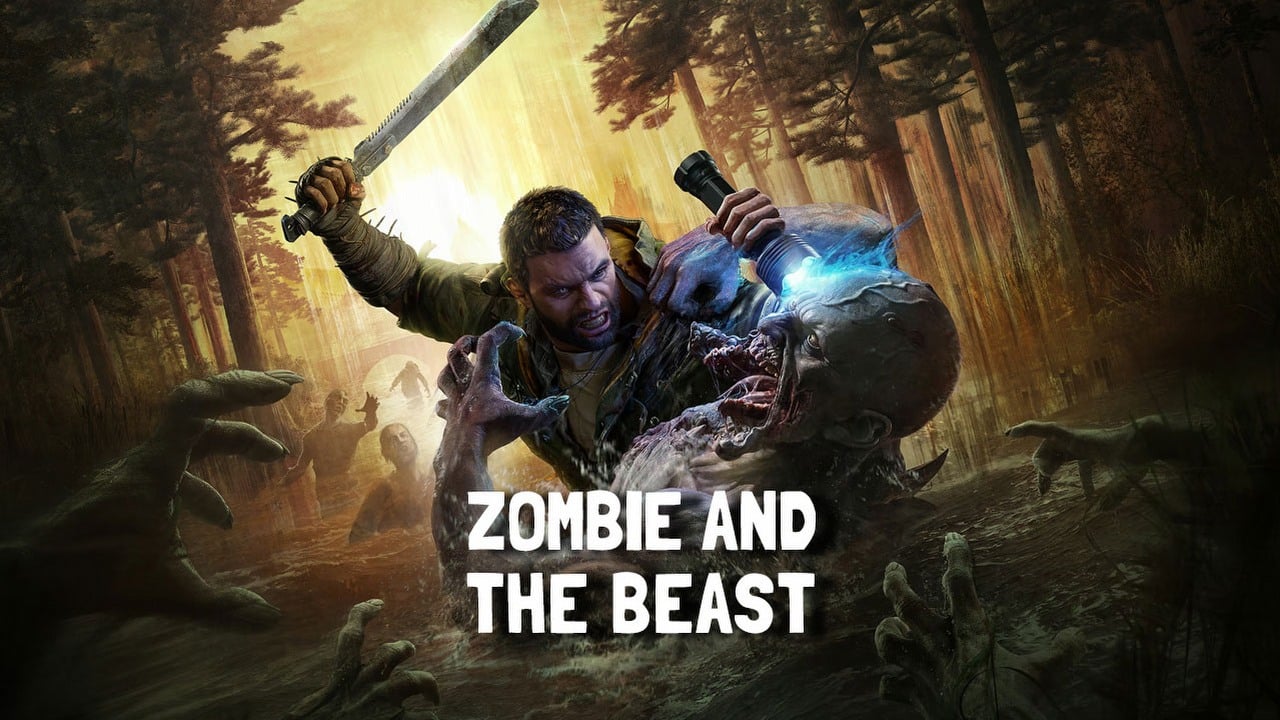
Three weeks ago, I was given the chance to delve into Dying Light: The Beast. Initially, when I learned I’d be testing Techland’s latest offering, I must admit a flicker of skepticism crossed my mind. After all, the second chapter in this series, Dying Light 2: Stay Human, fell short for me in several crucial areas. Yet, as I reflect upon my experience and revisit the gameplay footage from its unveiling, it strikes me that The Beast could very well hark back to the spirit of my beloved first installment.
Kyle Crane returns
The storyline in Dying Light: The Beast continues the journey of our protagonist, Kyle Crane, from the initial game. In Dying Light, we were tasked with retrieving some sensitive files. Now, Kyle is on a mission to exact vengeance against the individual who subjected him to years of imprisonment and cruel experiments. This tale taps into the widely resonant theme of relentless revenge. It may not offer anything particularly novel, but the palpable rage and animosity that Kyle holds towards the primary villain are evident from the outset.
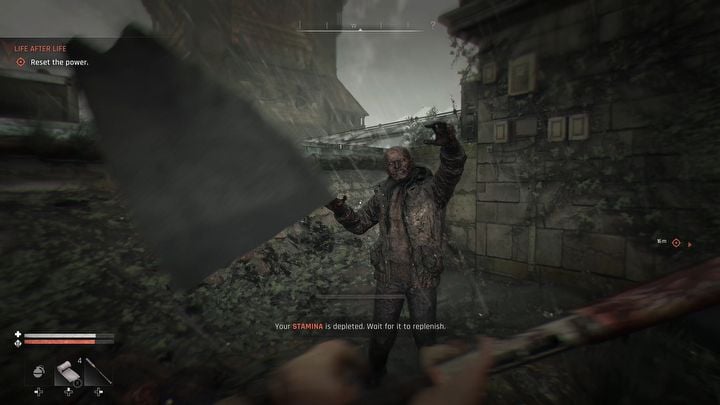
The challenge lies in the fact that the character in question, known as The Baron, boasts a vast force of mercenaries at his disposal. Reaching him won’t be straightforward. Moreover, in Castor Woods, where the story unfolds, there are not just the familiar types of zombies from the series, such as Volatiles, Virals, Mutants, or Night Hunters, but an abundance of them. The Baron has a peculiar pastime beyond his human experimentation; he also breeds unique zombie hybrids, which he calls Chimeras. Overcoming these powerful creatures will be Crane’s primary objective.
Gazie’s Chocolates
Following an overview of the main storyline for Dying Light: The Beast, it’s now time to delve deeper into my gaming experience. I was fortunate enough to complete four primary missions and two side quests during my playthrough, and I must say, they were well-crafted narratives. Although the script may not yet be award-winning, there is undeniably a noticeable enhancement compared to earlier versions. The English version of the game particularly benefits from Roger Craig Smith’s exceptional voice acting performance, which effectively conveys the character’s sorrow and rage in a convincing and captivating manner.
One element that left an impression was how some tasks were structured, reminiscent of another popular game – The Witcher 3. As previously stated, one of Crane’s primary objectives is Chimera hunting. This activity often includes a mini-investigation, tracking, understanding the story behind each task, and ultimately confronting the Chimera, which can be challenging. We learn about this from… Well, it goes without saying that it isn’t a criticism! In fact, I found those missions incredibly enjoyable.
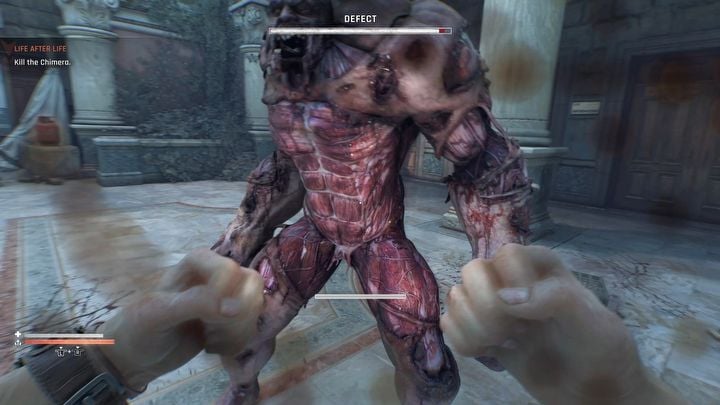
Pursuing Baron’s Chimeras in this game serves a dual purpose – it advances the plot and enhances gameplay. After vanquishing a beast, we accumulate skill points that aid us in upgrading our “Beast” skills. In The Beast, one segment of the skill tree focuses on parkour and combat, while another is dedicated to the unique abilities of the protagonist “Beast.” Some skills may seem familiar from earlier games, like the jump kick or the air-landing move triggered by a specific button press. However, there are also fresh elements to uncover.
I must confess that I feel like a monster
As an avid fan, I can’t help but share my excitement about the latest addition in Dying Light: The Beast – the highly anticipated Beast mode! This new feature introduces a power meter at the lower left corner of the screen. Once filled, Crane can tap into his Beast form, enabling us to dish out more damage, absorb less, and employ unique abilities. These include a swift sprint to plow through enemies or a powerful ground attack that sends nearby foes flying! The best part? We can purchase an array of skills for this mode, and from what I’ve glimpsed, they seem incredibly diverse.
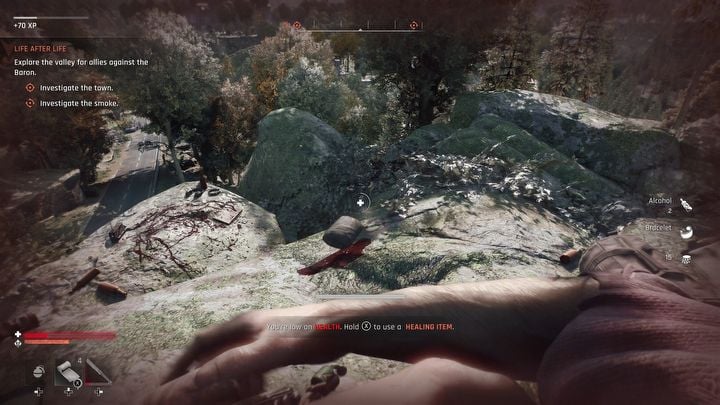
Despite my overall appreciation for this feature, there’s one significant issue I’ve encountered: I don’t have the freedom to activate it whenever I choose. The power-up that transforms Kyle into his beast form recharges through inflicting and receiving damage. When we attack, it charges quicker; when attacked, it slows down. Once full, the character automatically initiates Beast mode. We can determine its duration since we can deactivate it, but this has led to instances where I’d trigger Beast mode after defeating the final opponent in a fight, which was unnecessary. Ideally, I’d like more control over when this happens.
Zombinator
In the game Dying Light: The Beast, the parkour remains much the same as in previous versions, offering a robust and flexible system for swift movement, aiming to maximize player freedom. Throughout my play session, I explored The Old Town, centrally located on the map, questioning if perhaps our hero Crane had lost some of his agility over time. Fortunately, it appears that the ex-GRE agent retains the same nimbleness he displayed a decade ago upon arriving in Harran. He’s quick and adept at utilizing environmental features for climbing. I frequently utilized his wall-running skill, which granted a temporary speed boost. The Old Town also offers items to aid our acrobatics, such as trampolines, zip lines, and tall lamps that enable us to traverse from one building to another.
A significant aspect that has been enhanced in the gameplay is the combat system. While its fundamental mechanics remain consistent with the past two versions, the intensity has been significantly ramped up. Blood spurts abundantly, limbs fly everywhere, and the final blows are both impactful and weapon-dependent. In Beast mode, you’ll encounter exclusive finishing moves. To sum it up, I anticipate a high level of violence and gore, as I’ve demonstrated by decapitating, dismembering zombie bodies during testing.
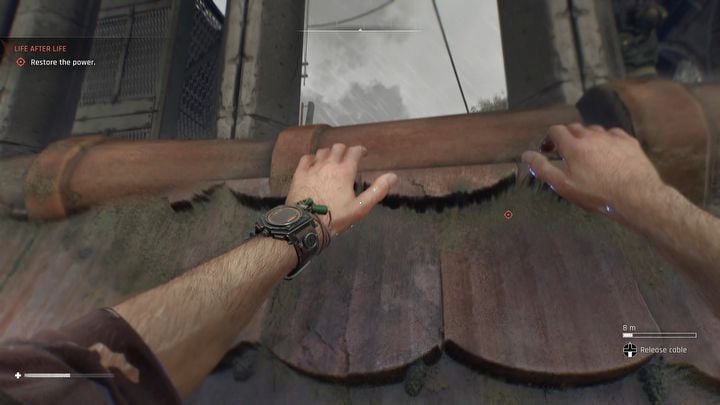
In the original “Dying Light,” players had the choice to use firearms; this feature was absent in the sequel at first, but was eventually included following player feedback as part of an update. Contrastingly, “The Beast” resembles the first game in the series by giving players a gun right from the start. However, I could only locate a standard pistol during my playthrough, and I must admit that the shooting mechanics weren’t as rudimentary as they were in the initial installment – ammunition was limited, and firing a weapon in the city would alert every nearby zombie to my location. Therefore, guns are unlikely to be our primary weapon of choice. However, it is important to note that my sample size for research wasn’t extensive.
Instead of favoring long-range weapons like bows, I opted for various melee options such as shovels, knives, machetes, axes, hammers, and more when it comes to battling zombies. This physical combat style mirrors what enthusiasts of the series are accustomed to. And let’s not forget about weapon customization – taking an ordinary baseball bat and transforming it into a weapon that shoots Greek fire like Mjolnir is just one example.
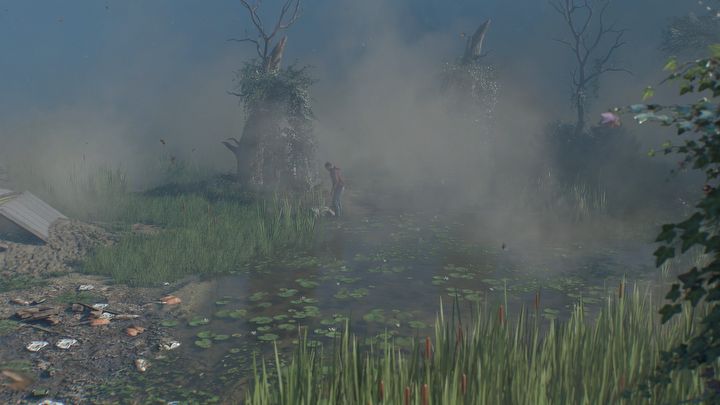
A significant innovation (or a reversion to the initial concept) is the elimination of the stamina gauge while performing parkour. From now on, Crane can grip onto an edge without worrying about losing his grip due to exhaustion. This issue was previously experienced by the protagonist, Aiden, in Stay Human, and thankfully, it’s been addressed. In combat, however, the stamina gauge continues to be essential, as managing it effectively is crucial, since running out can make dodging challenging, potentially leading to problems. During the show, I had a brief chat with Tymon Smektala, Director of the Dying Light Franchise. When asked about the reasoning behind removing the stamina gauge during parkour, he explained:
In the second version of Dying Light, one concept stood out as problematic: a feature that aimed to enhance player endurance but inadvertently restricted our freedom to roam around freely. It was an intriguing idea initially, but it ended up being counterproductive to the game’s open-world nature. Through this experience, we gained valuable insights and learned how to adapt to situations like these.
Thriller
In the game Dying Light 2: Stay Human, many players expressed that the nighttime aspect of the game didn’t particularly scare them. This sentiment mirrored my own experience, and I had hoped for improvements in this area, which unfortunately did not materialize. However, let me clarify that I am referring to the second installment of the series here. When considering it from a broader perspective, zombies haven’t traditionally scared me very much (except for the fast ones – they can be quite thrilling). This could be due to their frequent use in popular culture. Interestingly enough, Dying Light: The Beast was able to give me chills.
To begin with, let me note that the darkness of the night in “The Beast” is palpable. We rely solely on a flashlight to light our path, but its beam only illuminates what lies directly ahead and within a central area. This leaves the rest of the screen shrouded in mystery, creating an atmosphere where it seems something could leap out at any moment – and frequently does! The film also expertly manipulates fear through the use of ominous sounds that build tension effectively. I recall one instance where I entered a room late at night, and the music suddenly turned chilling, accompanied by eerie noises emanating from behind the wall. Needless to say, I didn’t linger long in that space.
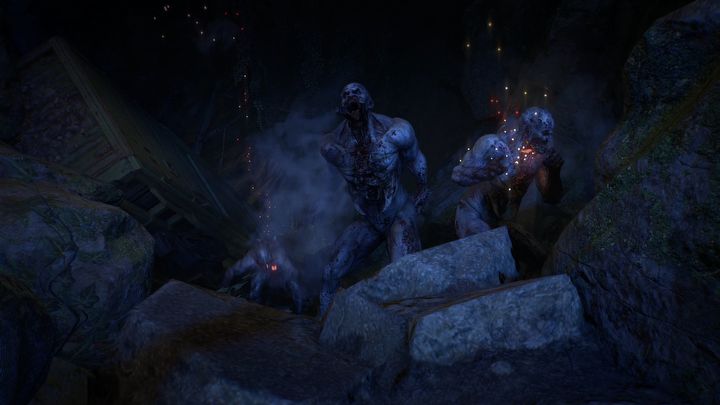
During a brief distraction, the night fell upon me unexpectedly, forcing me to squeeze through a narrow opening to evade the roaming Volatiles. Surprisingly, a sudden appearance of a zombie from a hidden corner gave me quite the scare, though I had anticipated it. It’s been some time since I’ve encountered such an event, leading me to believe it was a pre-scripted incident. However, I found myself once more falling for this trick without warning. Frankly, I’m not fond of jump scares; in my opinion, there are numerous other effective ways to induce fear. Fortunately, The Beast appears to use this method sparingly.
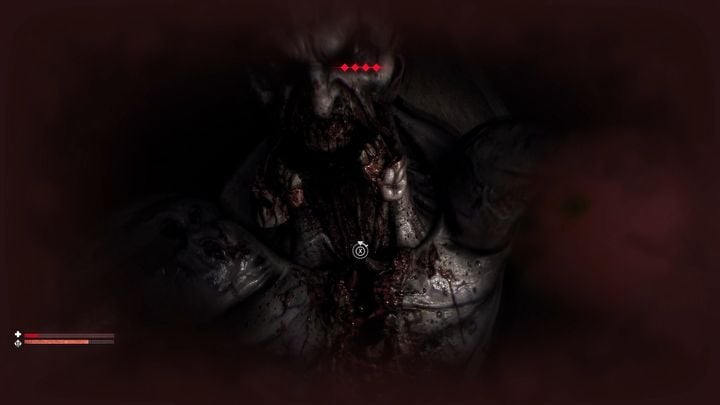
In my previous discourse about the night and the Volatiles, I find myself compelled to share some thoughts on nocturnal activities. Similar to past excursions during twilight hours, we must keep in mind that dreadful creatures lurk in every hidden corner, their sole purpose being to prey upon Crane. Even at a moderate challenge level (Survival), it’s relatively simple to elude them, and the “pursuit meter” fills up gradually, providing ample opportunity for escape. An intriguing aspect is that if we deactivate our flashlight, it becomes harder for the Volatiles to locate us. However, once I elevated the difficulty level to its peak (Brutal), I was quickly marked by all pursuit indicators within a minute, and my only means of salvation was fleeing to the UV-lit safe zone. I believe that the normal difficulty setting could benefit from a heightened sense of urgency during pursuits; it currently feels somewhat relaxed.
Techland delivers?
From my perspective, you could envision a fantastic game in development that seems to learn from its predecessors’ errors and build upon their strengths. However, it’s important to note that not every aspect appealed to me, such as the driving model which felt unrealistic and lacked the enjoyable sensation of control when navigating turns. Regarding optimization, I didn’t encounter any issues as we played on high-end systems that kept a consistent 60 frames per second. Additionally, the open world portion we explored seemed to feature the same repetitive side activity of administering bandages, which felt somewhat monotonous.
Nevertheless, these small aspects shouldn’t undermine the truth that Dying Light: The Beast boasts an appealing visual and auditory presentation, largely due to Olivier Deriviere’s efforts. As we eagerly anticipate August 22nd, we hope that Techland will deliver a well-crafted, polished, and comprehensive game that lives up to our expectations. Here’s to a good night and good luck!
Read More
- Who Is Harley Wallace? The Heartbreaking Truth Behind Bring Her Back’s Dedication
- 50 Ankle Break & Score Sound ID Codes for Basketball Zero
- Basketball Zero Boombox & Music ID Codes – Roblox
- 50 Goal Sound ID Codes for Blue Lock Rivals
- The best Easter eggs in Jurassic World Rebirth, including callbacks to Jurassic Park
- TikToker goes viral with world’s “most expensive” 24k gold Labubu
- Ultimate AI Limit Beginner’s Guide [Best Stats, Gear, Weapons & More]
- Lost Sword Tier List & Reroll Guide [RELEASE]
- 11-year-old boy beats 7-year-old to win 2025 Rubik’s Cube World Championship
- League of Legends MSI 2025: Full schedule, qualified teams & more
2025-07-21 17:03